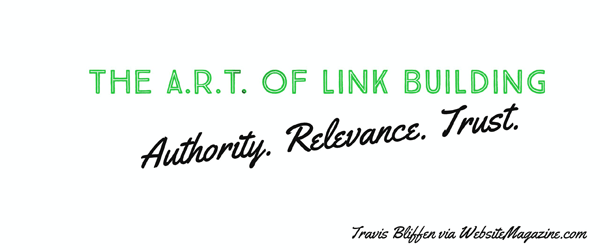What Makes a Good Backlink?

To understand what makes a link worth getting, marketers first need to understand the "why" behind Google's link strength assessment protocol.
While nobody knows the exact formula used to rate inbound links, we do know what Google is trying to accomplish. Understanding the search engine's motivation is half the battle.
In the early days, Yahoo ruled the Web. Google thought it had a better method of reviewing sites and helping searchers find information more efficiently. As it turns out, Google was right. Finding what you want quickly has become an expectation among Web users and to maintain its impressive market lead, Google must make sure it continues to have the best results.
Over time, a myriad of link building tactics has come and gone. Link pyramids, link wheels, automated link building, Web 2.0 link building, the list goes on (and on).
We have even gotten to a point where some seemingly "above the board" link building tactics just aren't working like they used to. Take scholarship link building for example. Once a powerful tactic, this method has become a lot less effective. Getting link placements is a little tougher since schools have caught on to the fact their scholarship pages are being pimped out by SEOs, looking to score a quick link. That is not the real problem with this method though but don't worry, as we get into the three elements that make a great link, I am certain you will see the shortcoming of this once great strategy.
The A.R.T of Link Building
It has been said many times that SEO is as much an art as a science and link building is no exception. Prospecting, contacting, pitching and creating content that other people love as much as you do can be rough. If you are going to go through all the effort to land a link, you want to be sure it is one Google will reward you for. This is where the acronym "A.R.T." comes into play.
Authority
Do follow links are a "vote of confidence" from one site to another. The more authoritative the linking site is, the more their opinion matters to Google.
Think of an authority site as doctor and a lower powered site as your neighbor who took an EMT class 15 years ago in college. Both may have knowledge of the medical field but if you needed a diagnosis, whose opinion are you more likely to trust? If you are like most, the doctor's (or authority site's) opinion is going to carry more weight.
What Makes an Authority Site?
Domain authority (DA) is often what comes to mind when someone mentions an "authority" site. DA is a great tool to get an estimate of the strength of a site but that is all it is, an estimate. Even today, you could take a tool like GSA search engine ranker and send enough links to a site to boost the DA into the 50s or 60s.
Instead of relying on a single third-party metric, authority should be determined by asking these questions:
- Does the site have a strong backlink profile?
- Does the site have a natural and healthy anchor text profile?
- How many reputable sites are linking to the site in question?
- Does their site feature industry experts, trained professionals or industry speakers?
- Is the content on the site consistently well written, indicating a strong editorial process?
- Is there a high barrier to entry? Specific writer guidelines?
- Does the site have significant organic search traffic?
- Is the site mentioned by other industry sites?
Depending on the level of "authority" you need for your project, you can loosen or tighten what is acceptable but this will serve as a solid framework for reviewing a potential site.
Relevance
Gaining links from sites relevant to your own will help you get the most "bang for your buck" when building new links. If a dog trainer was to link to a transmission repair shop in another country, the relevancy would be low. Even so, that doesn't mean it couldn't happen naturally.
What if the dog trainer was visiting family in Italy and the car he borrowed from his relatives to drive while he was there broke and needed repair? He may have a funny story about it, maybe he even found out the mechanic used to be a dog trainer. In either event, there are cases where a link between the two sites could be formed. Whether the link is natural is not the issue here though. Instead, relevance is more focused on determining how credible the link source is on the topic they are linking to.
Let's go back to the doctor reference from earlier. If a dentist talked about a foot surgery technique on his blog and a podiatrist also talked about the same procedure, which doctor do you think would be a more credible source on the topic?
Since the podiatrist is a more credible source on the topic of foot surgery, a link from his blog could carry more weight even if the dental blog has a higher domain authority, and even if the dental site is more popular.
The reason this update makes sense for Google is because it is a systematic way to kill general private blog network (PBN) sites that cover a variety of unrelated topics. This capability most likely evolved from the original algorithm they created to discount an article filled with unrelated links, a popular early PBN and Sape Network tactic.
For now, you can still see a boost from a relevant article on an unrelated site; it is, however, only a matter of time before that loophole is closed.
Trust
Trust Flow (TF), a popular metric created by Majestic looks at the inbound links to a website and assigns the site a TF rating based upon the strength and credibility of those links. Non-subscribers can get a high-level view of this metric like in the example to the right.
Topical Trust Flow (TTF), another Majestic metric uses a similar method to evaluate incoming links. TTF looks at the topics of the sites linking to the site being analyzed. This information is used to determine the most relevant topic(s) for that site. While TTF is a good starting point, it does have flaws just like domain authority.
Above, we mentioned how to determine if a site was a true authority site and what questions you should ask of any site before attempting to place a link on it. We also talked about relevance and how some sites could be a more credible source of information on a topic than others.
Real trust should be determined by evaluating the authority (the actual power) of an inbound link and how credible the site is on a topic. If the site has credible links from relevant niche specific sites, its trust rating should be 10/10. This would be something like the podiatrist linking to the new foot surgery procedure site.
If as in the example above, a site has links from authority sites that are less credible (think about the dentist talking about foot surgery) the trust rating should be slightly lower, maybe 7/10.
The pet trainer linking to the transmission repair shop is the least relevant pairing and as such, a trust rating of 3/10 may be applicable in this case.
A lower trust rating does not mean the link will have no impact, rather that it will be less influential than a more trusted link. This could change in the future though.
Building Links Today that Survive Tomorrow
As Google continues to advance, we can be certain it will continue to invest heavily into protecting search results. Google seemingly does care about giving searchers the best results, even though its motive (like most businesses) is to maintain and grow profitability.
To do so, Google's algorithms must continue to evolve. The next logical step in this evolution is to give links in content from expert authors and niche specific sites more impact than a link in a generic article, on a general site.









